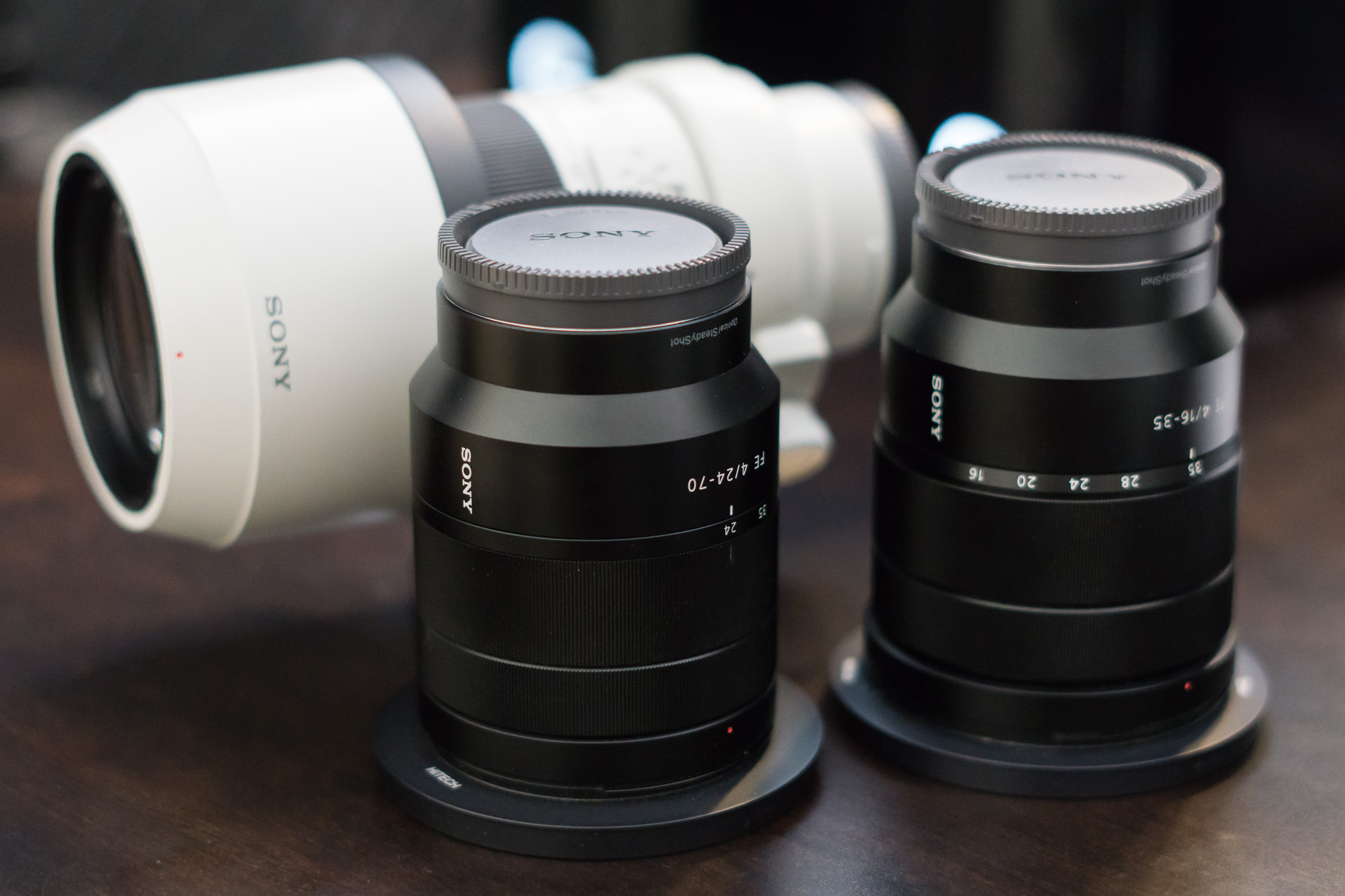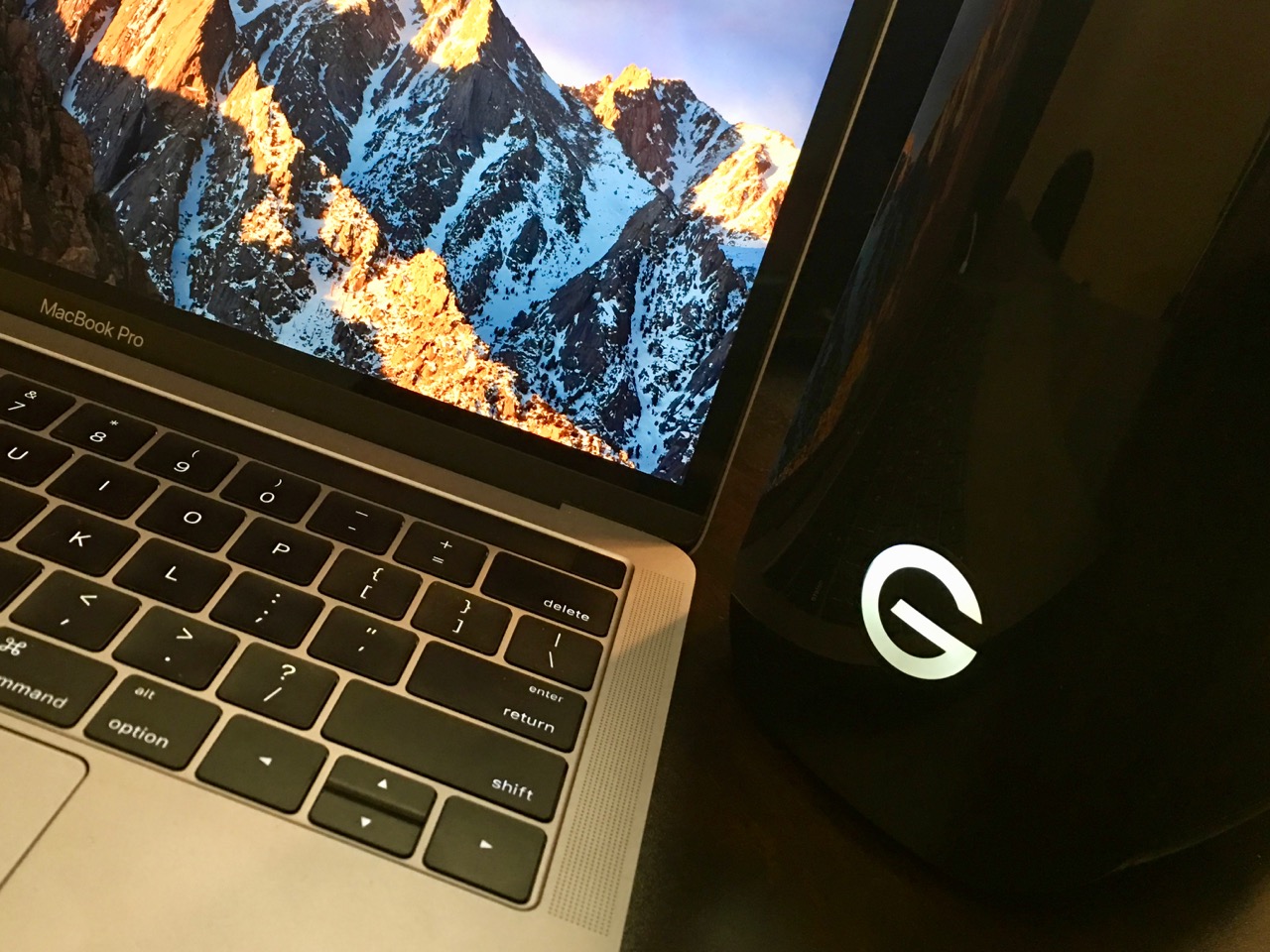5 Things To Consider Before Buying A New Camera
I'm in the market for a new camera. Here are 5 things I am considering before I make a purchase.
I have been a very happy Sony customer for the last 2+ years. My A7R continues to serve me well. I am inching closer to an upgrade. I know the A7RII is an awesome camera. I've read the reviews. There are photographers I follow and respect that rave about it. I've held it in my hands and it feels good. And there's the recently rumored A7RIII.
However, I must also consider the "surround" that goes with a new camera body. Especially when a new camera body means an increase in megapixels. Higher megapixels come with a cost. I think we photographers often fail to consider the ripples of a new camera body.
There is more to the decision than just the camera body. That's what prompted me to write this post. So let's go.
1. Storage Space
Hard drive space is the obvious impact when the new camera body you are considering has a higher megapixel count. More pixels mean larger photo files. In my example, the Sony A7R produces 36MB RAW files. The A7RII pumps out 42MB RAW files. That's about a 16% increase. Non-trivial for disk storage, but manageable. Although if I dabble with uncompressed RAW files, I'm looking at more like 80MB per shutter press. I'll hazard a guess the A7RIII will produce even larger RAW files, on the order of 50-70MB.
What about memory cards? How large are the ones you own? If you are still shooting with 32GB memory cards, that may be a problem. Using my example again, my A7R could take around 900 photos before filling a 32GB card. That drops to more like 750 with the A7RII. Or a mere 400 for those 80MB uncompressed RAW beasts. Storage is relatively cheap. However, for prolific photographers (think sports, wildlife, weddings) you may be eating up disk space and memory cards faster than Pac-Man eats dots. Projecting your storage needs is easy enough math. Just know those storage needs come with a price tag beyond the camera body - and they are recurring costs.
2. Lens Compatibility
Many of us that have been into photography for a long time have an investment in lenses. Maybe you've scrimped and saved to get some really good glass. If you are considering a camera body from another vendor, you need to consider lens compatibility. A prime example is moving from a DSLR system to a mirrorless system.
A new camera body may push the limits of your current glass
All things being equal, it's preferred to protect the investment you've made in lenses. There are lens mount adapters out there. Read the spec sheets. Adapters have gotten better and better. However, you have to do your homework. Does the adapter support your lenses? What features won't work (ex: auto-focus)? What features are hampered by the adapter (ex: focus speed)? (Note: I've not used any adapters personally, otherwise I'd have vouched for one by name here.)
3. Lens Resolution
You are drooling over that new, high megapixel camera. And maybe you are able to keep using your existing glass with an adapter. However... can your current lenses resolve enough detail for that big new sensor? A top notch sensor paired with a lens of lower optical quality won't produce the best images. Good glass from a few years back may or may not be up to the task of resolving 40 or 50 megapixels of data.
In simple terms, the sharpness of your photo is only as good as the weakest link in the chain.
DxOMark added the "perceptual megapixel" to their lens ratings several years ago. A nice feature of the DxOMark site is you can check the ratings of a lens as mounted on a variety of camera bodies (assuming the combination has been tested). I checked my Sony lenses on DxOMark and the perceptual megapixel (sharpness) values increased going from the A7R to the A7RII. Sony built the lenses thinking ahead to larger sensors. Did they think ahead to a rumored 50-60MP A7RIII sensor? We will see.
I also temper by-the-numbers ratings by asking other photographers I know and trust that use the gear I'm considering. Of course, I can only ask about cameras that exist. I have plenty of photo friends that use the A7RII. If I jump on the A7RIII train early, I won't have much tribal knowledge to tap into.
Is your computer up to the task to push more megapixels?
4. Compute Horsepower
The power of your computer is something all to often overlooked by photographers when moving to a new camera body. Imagine going from a 20 megapixel to a 40 megapixel camera. You have doubled the size of every photo you are processing. Can your computer handle that?
In this example, you are asking your machine to do double the work. Of course you don't want to have a slow processing experience. Yet, if your system is a few years old, you will probably experience sluggish behavior. In my opinion, the days are gone in the photography world where we can expect to use the same computer for more than a few years without an upgrade (or tolerating a slower experience).
I try my best to get 4 years out of a desktop machine - and that's pushing it. When I purchase a system, I get the maximum config, especially for components I know I can't upgrade myself. The stuff like the CPU or an onboard graphics device. I also add loads of memory. I future-proof my system as much as possible. I'm not looking forward to my next iMac update... memory won't be user replaceable. Apple's pricing on RAM is... well let's just say off-market pricing is way more reasonable.
If you're able, get a few test files from the body you are considering. Find a photographer friend that is using the camera you are considering and try working with the files on your machine. Visit a local camera store and ask to take a few snaps to your own memory card. Or rent the body for a weekend and give your cataloging and processing workflow a real world test. Another though is to stitch together a few panoramas and take those through your workflow. They are morally equivalent to large RAW files with lots of pixels to push.
And prepare yourself - you may either need a computer upgrade or live with a sluggish experience for a while.
5. What Problem Are You Trying To Solve?
The last consideration on the list should be the first thing you think about. Why are you getting a new camera body? When I consider a new gear purchase, I ask myself what photographic problem the new gear will solve.
Ask yourself what limitation a new camera body will overcome
Sometimes the reasons are easy to rattle off. Your current camera 10 years old and reaching the end of its life. Or your current camera is flat out broken! Other times, the benefits are nebulous, the perceived problems are more subtle. You ask yourself "Do I really need that gear? Or do I just want it because it's new?"
Let's use me as an example. Why am I considering an upgrade when I'm quite happy with the A7R? I have a few reasons.
I need a second full-frame camera. My current backup body is a crop sensor system, an A6000. It works great and I like the A6000, too. However, when I'm traveling for a shoot, I'm always a little nervous that a problem with my A7R means I lose my full-frame goodness.
I want the in-body stabilization of the A7RII or A7RIII (I'm assuming the A7RIII will have this feature). This will allow me to take better handheld shots. My landscape work is always on a tripod. However, when I travel, I shoot handheld much of the day. And my hands aren't all that steady.red
This is part of a grander plan for my cameras and my photography. Once I have a new full frame camera, it will become my main body and the A7R my backup. I then will convert my A6000 to infrared and explore a whole new (new to me!) arena of photography.
So ask yourself - what problem will that new camera body solve for you? It is a way to temper that desire for a new "shiny object". You might know this as GAS (gear acquisition syndrome).
Parting Thoughts
Buying a new camera is fun. It's exciting. It can reinvigorate your photography. It can get you off the couch and out making photographs. However, don't overlook the ripples a new camera creates. There may be costs beyond the camera itself in lenses, disk space, or computing power. Weigh those costs against the value of solving the photographic problem you have with your current system. And after all that, if a new body makes sense... buy it, enjoy it, and make great work.













